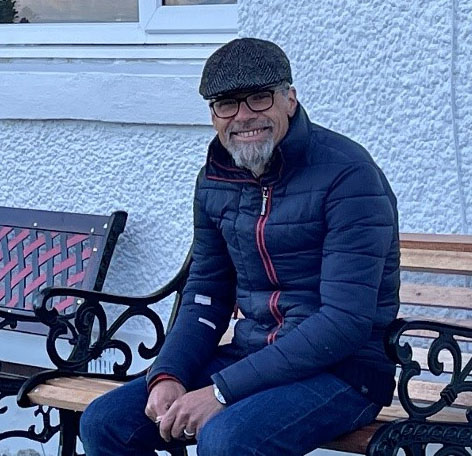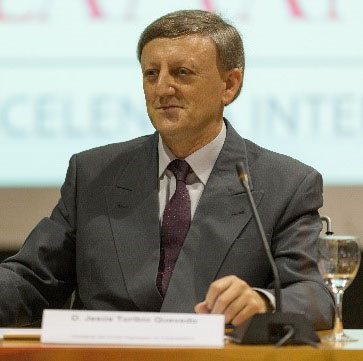Keynote Speakers
Prof. Luca Susmel
Professor of Structural Integrity, the University of Sheffield, UKSpeech Title: Cracking behaviour and static assessment of notched additively manufactured polylactide
Abstract: The aim of this talk is to investigate the accuracy of the Theory of Critical Distances (TCD) in estimating static strength of notched additively manufactured PLA as notch sharpness, infill angle and infill level vary. The TCD takes as its starting point the assumption that the extent of damage under static loading can be assessed successfully by using two different material parameters, i.e. (i) a critical distance whose length is closely related to the material microstructural features and an inherent (i.e., a defect free) material strength. Plain and notched specimens of 3D-printed PLA were manufactured (with different in-fill level) by making the deposition angle vary in the range 0°-90°. Using the TCD, failures were predicted by directly post-processing the linear-elastic stress fields determined by solving standard Finite Element (FE) models. Independently of notch sharpness, printing direction and infill level, the estimates being obtained were found to be highly accurate, falling within an error interval of about 20%. This result fully supports the idea that the TCD can successfully be used in situations of practical interest to design against static loading notched components of additively manufactured PLA by directly post-processing the results from simple linear-elastic FE models.
Biography: Luca Susmel joined the University of Sheffield in 2011 as Professor of Structural Integrity. Since 1998 Luca has focused his attention mainly on problems related to the static, dynamic and fatigue assessment of engineering materials and components. In particular, by working both in Italy (University of Padova, University of Ferrara, University of Udine), in Ireland (Trinity College, Dublin), and in the UK (university of Sheffield), he has devised several novel engineering methods suitable for designing components (experiencing stress concentration phenomena of any kind) against static, dynamic and fatigue failures. According to his modus operandi, Luca has performed both theoretical and experimental investigations and all the design methods he has formalised so far have always been validated through a systematic experimental work. Luca has an outstanding and unique expertise in designing notched and welded components against constant and variable amplitude multiaxial fatigue.
The work done in the above research areas has led to more than 350 scientific papers in the period 1999-2022 (of which more than 135 articles in international peer-reviewed scientific journals) as well as to a book devoted to the multiaxial fatigue assessment (Susmel, L., Multiaxial Notch Fatigue: from nominal to local stress-strain quantities. Woodhead & CRC, Cambridge, UK, ISBN: 1 84569 582 8, March 2009). His scientific papers have attracted significant interest from the international scientific community, evidenced by an h-index of 38 with more than 5.65k citations in total according to Google Scholar. He is a member of the Editorial Boards of the two leading international journals in the fatigue and fracture field, namely “International Journal of Fatigue” and “Fatigue & Fracture of Engineering Materials & Structures”. Luca is the Editor-in-Chief of “Theoretical and Applied Fracture Mechanics” (published by Elsevier) which is one of the top journals in the fracture mechanics field (Impact Factor=3.021).
Luca has developed a software specifically designed to perform the fatigue assessment of plain/notched/welded components subjected to both constant and variable amplitude uniaxial/multiaxial fatigue loading (Copyright document N. 007849-D007048).
As to the transfer of his research’s outcomes into engineering practice, in recent years, and especially after the publication of his book, Luca’s expertise has been sought on many occasions by several structural engineering (working in both European and non-European companies) successfully using the approaches developed by Luca himself to design real components and structures.
Since the end of the 90s, Luca has been involved both as primary investigator and as co-investigator in a very large number of research projects funded by national public funding bodies, European Community, Trusts, and private companies.
Prof. Dr. Jesús Toribio
Fracture and Structural Integrity Research Group (FSIRG), University of Salamanca (USAL), SpainSpeech Title: Innovative Approach to Fatigue Crack Propagation on the Basis of Microstructurally-Induced Locally-Deflected Crack Paths: A Tribute to Antonio Machado and Fray Luis de León
Abstract: The lecture deals with the microstructure-based anisotropic fatigue behaviour of hot rolled and cold drawn pearlitic steel wires, showing that: (i) the corresponding fatigue crack paths in both the hot rolled bar and the heavily cold drawn wire develop in global mode I in both materials, i.e., no macroscopic (apparent) anisotropic effect arise in the matter of fatigue crack propagation, in spite on the inherent microstructural anisotropy produced by heavy drawing in the commercial prestressing steel in the form of orientation in the wire axis or cold drawing direction of both microstructural levels of pearlitic colonies and lamellae; (ii) at a finer microstructural level, the associated fatigue micro-crack paths in both the hot rolled bar and the cold drawn wire exhibit frequent deflections (microstructurally-induced locally-deflected crack paths), thus generating a zig-zag micro-crack path with the result of local mixed mode in both materials, i.e. anisotropic fatigue behaviour and locally multiaxial fatigue crack growth), i.e., a microscopic (physical) anisotropic effect arises in the matter of fatigue crack propagation linked with the manufacture-induced microstructural orientation; (iii) this local anisotropy of fatigue resistance allows an innovative approach to fatigue crack growth using an actual (or modified) Paris Law that accounts for the real (microstructurally-induced locally-deflected fatigue crack path) in local mixed mode instead of the apparent fatigue crack path in global mode I; (iv) the described fatigue crack paths recall the words by Antonio Machado “se hace camino al andar” and the composite lamellar microstructure of pearlite recalls Fray Luis de León “y entrambas a porfía mezclan una dulcísima armonía”.
Biography: Professor Jesús Toribio graduated in Civil Engineering in 1982 and then in Mathematics in 1986. In 1987 he was awarded his PhD in the Polytechnic University of Madrid (UPM) and turned into Associate Professor in that Institution. In 1992 he became Full Professor and Head of the Materials Science Department of the University of La Coruña (at the age of 32, thus being the youngest Full Professor in the area of Materials Science in Spain). In 2000 he moved to the University of Salamanca (USAL) where is currently Full Professor of Materials Science and Head of the Fracture and Structural Integrity Research Group (FSIRG) of that Institution.
His research work is mainly concerned with fatigue and fracture mechanics, environmentally assisted cracking, stress corrosion cracking and hydrogen embrittlement/degradation/damage of metals and alloys (mainly cold drawn pearlitic steel wires for civil engineering and austenitic stainless steels for nuclear engineering and energy applications), covering theoretical, computational and experimental aspects. He actively participates in International Conferences, very often being member of the International Advisory Committee, organising Special Sessions/Symposia, being Session Chairman or delivering Plenary/Keynote/Invited Lectures. Professor Dr. Jesús Toribio has published more than 500 scientific papers, most of them in international books and journals.
He is the Chairman of the Technical Committee 10 (TC10): Environmentally Assisted Cracking of the European Structural Integrity Society (ESIS) and has been Director (2013-2017) of the International Congress of Fracture-The World Academy of Structural Integrity (ICF-WASI), being responsible of launching the Ibero-American Academy of Structural Integrity (IA2SI). Prof. Toribio has been awarded a variety of scientific research prizes and awards including: (i) UPM Young Scientist Award of the Polytechnic University of Madrid; (ii) METROTEC Award for the best Technological Research Project; (iii) Honour Medal of the Spanish Group of Fracture (GEF/SEIE) in recognition of his research achievements in the field of fracture mechanics; (iv) Fellow of the Wessex Institute of Technology (WIT) in recognition of leadership and outstanding work in engineering sciences; (v) Top Reviewer 2011 in recognition of an outstanding contribution to the quality of the Elsevier International Journal Engineering Fracture Mechanics; (vi) Fellow of the European Structural Society (ESIS Fellow) for his outstanding contributions to the art, science, teaching or practice of fracture mechanics and his service to the society; (vii) Honorary Member of the Italian Group of Fracture (IGF) in acknowledgement and appreciation of his outstanding achievements in the research field of fracture mechanics; (viii) Best Paper and Presentation Award in the International Conference on Energy Materials and Applications (ICEMA 2017) held in 2017 in Hiroshima, Japan, with a paper entitled: Numerical Simulation of Hydrogen Diffusion in the Pressure Vessel Wall of a WWER-440 Reactor; (ix) María de Maeztu Scientific Award of the University of Salamanca (800th anniversary during 2018) in recognition of academic trajectory and excellence in scientific and technological research; (x) Scientific Merit Award of the Portuguese Group of Fracture (PGF) in recognition of scientific contributions during his career.


